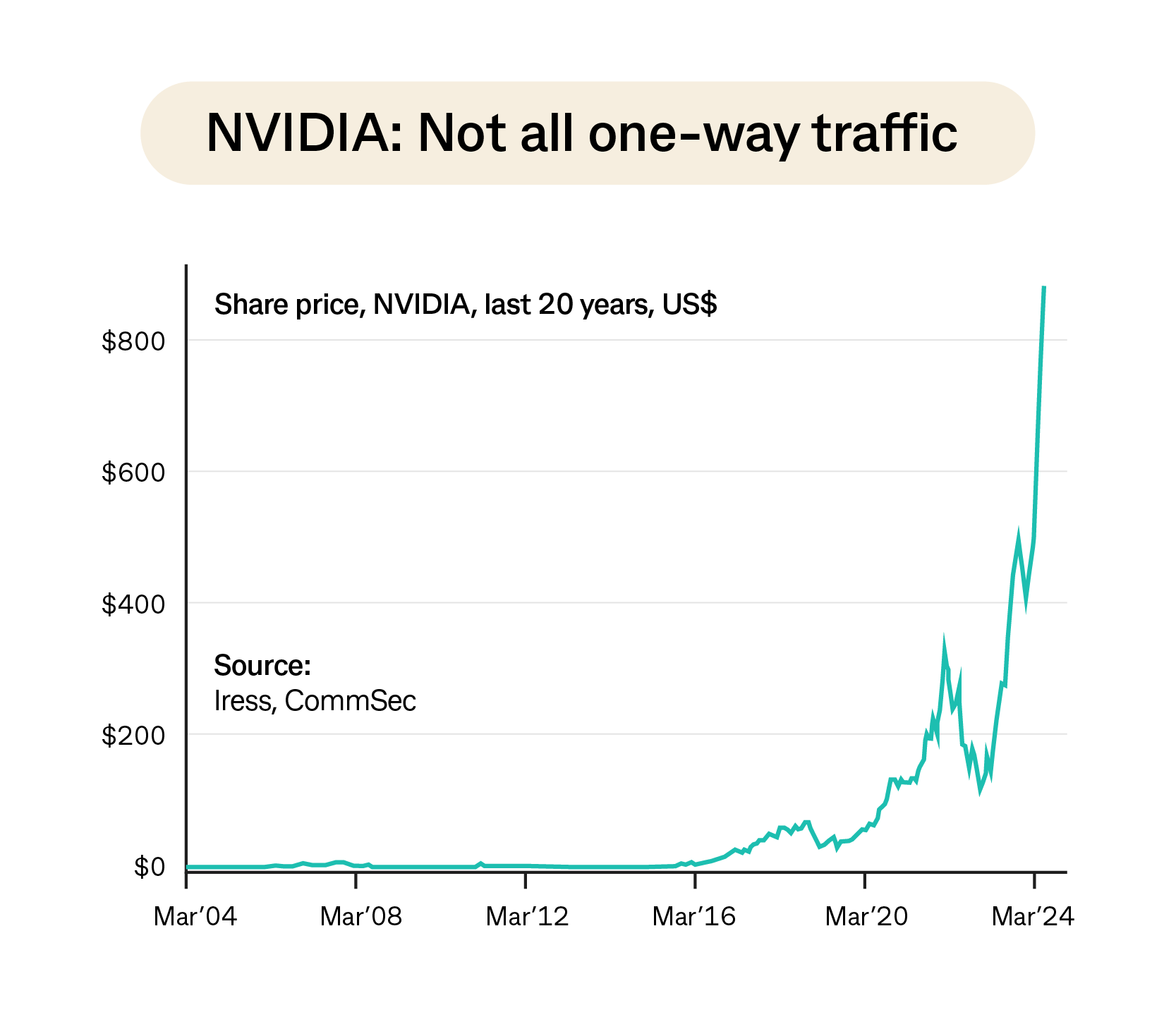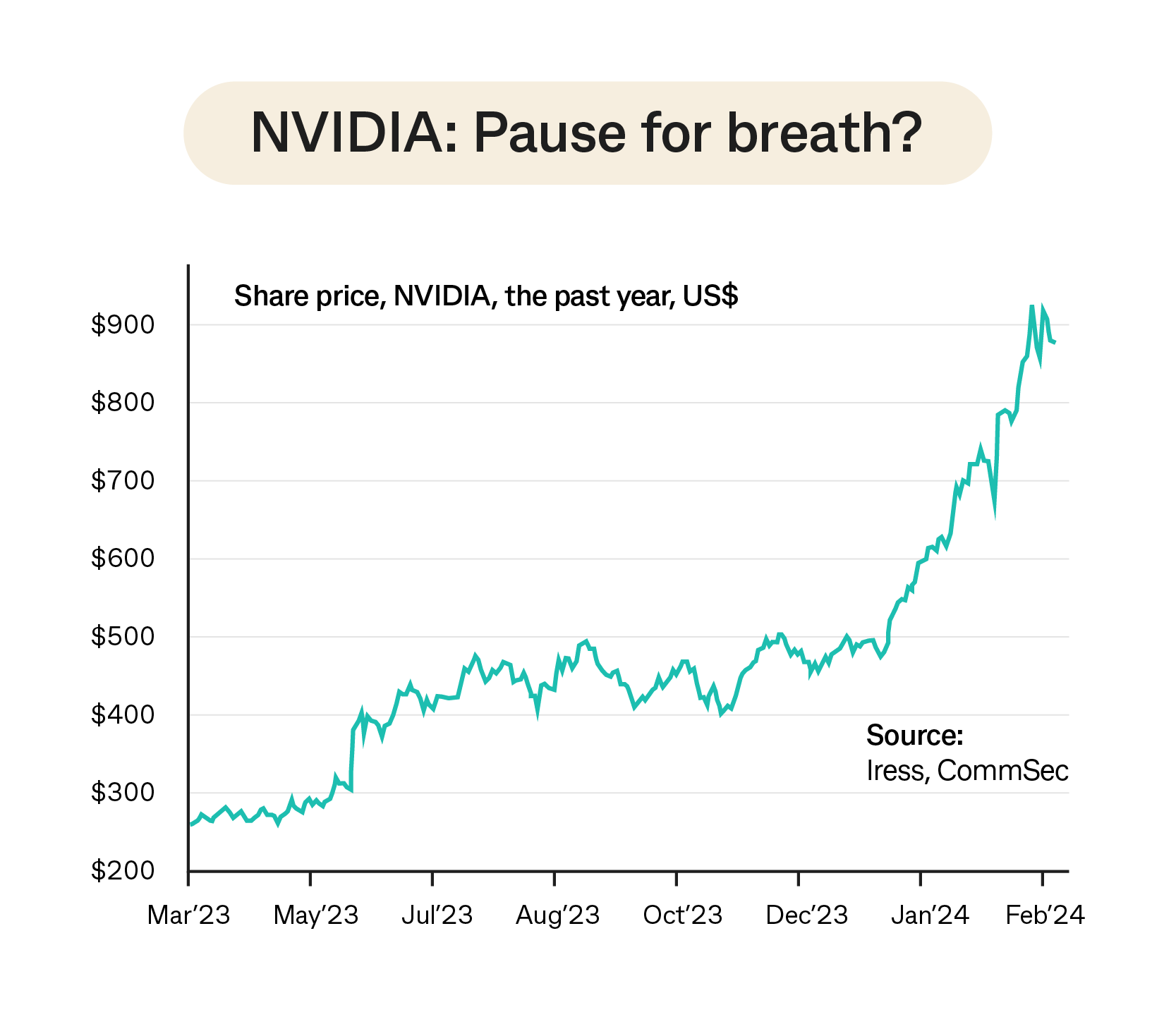 CommSec
CommSec
22 Mar 2024
NVIDIA, you have no doubt read and heard about the company. And you know that it is a hugely successful technology company. But you may not be sure about what it actually does and how it became successful.
So here it goes. First, how do you pronounce the name? En-vidia. Second, why that name? That’s a story in itself but apparently it is derived from the Italian word for envy, “invidia”.
The company began in 1993 but its early success wasn’t until 1997 with the launch of the RIVA series of graphics processors (in the lingo, the GPU or graphics processing unit) used in computer games, and personal computers.
The RIVA 128 series of GPU was hugely successful, revolutionising gaming as well as graphics on PCs.
In the pursuit of growth, NVIDIA went public in 1999, its initial public offering (IPO) debuting at $12 a share.
NVIDIA expanded from there through the 2000s, designing graphics chips for specific applications for companies such as Microsoft’s Xbox gaming console, Sony’s PlayStation 3, NASA and Audi.
In the 2010s, NVIDIA achieved great success with its parallel computing technology. Basically this is a technology that allows faster problem solving. And that provided it with a key advantage over other processors in the field of artificial intelligence or AI – the theme of the moment in 2024.
NVIDIA continued to focus on – and be successful - with its partnerships. Such as in designing driverless car applications for Toyota.
But it hasn’t all been sunshine and roses for NVIDIA, with the tech giant having to deal with a number of legal suits, and face scrutiny by regulators. But it has managed to bounce back each time.
NVIDIA continued to focus on achieving greater speed of its processors. And this helped drive the move by more and more businesses to build AI applications and embrace Cloud storage, where files or applications are stored physically and virtually away from the company’s operations.
Clearly, every company wants an edge. If a computer chip allows for faster problem solving, or where a company has faster access to files that can be securely accessed by a company’s employees, it could reduce costs, boosts efficiency and potentially expands revenues. And that means greater demand for NVIDIAs processors.
That’s where NVIDIA has succeeded. And it is shown by the performance of its share price. From 1999 to 2015 the share price basically went nowhere. In fact at the end of 2015, the share price stood at just US$8.24.
What came next may surprise as many think that the current run-up in the share price is remarkable. In September 2017, the share price stood at US$70.25 – a nine-fold increase in less than two years. There was another wave from 2019-2021, with shares in NVIDIA hitting just over US$326 a share. But legal and regulatory setbacks saw the price down to US$121 in September 2022.


NVIDIA’s success and dominance in various hardware and software applications has led to increased regulatory scrutiny. At various times, it has been a victim of its own success.
The more recent growth has seen NVIDIA shares at more than US$900 a share. The record was US$926.69 on March 7, 2024. This means the world’s largest chipmaker has a market value which exceeds the entire Australian sharemarket, thanks in large part to the recent AI boom. Its rise has helped drive US markets to record levels.
So where to from here? Other computer chip companies continue to challenge and NVIDIA is always looking over its shoulders at regulators. Future success depends on NVIDIAs ability to innovate, respond, invent, enhance and come up with applications for its processors that others aren’t thinking about or even contemplating.
In that light, NVIDIA launched the new generation AI Blackwell graphics processor in March 2024, around five times quicker than current models.
Now the focus is on deliverability and the response by competitors.


 Back to
Back to 





